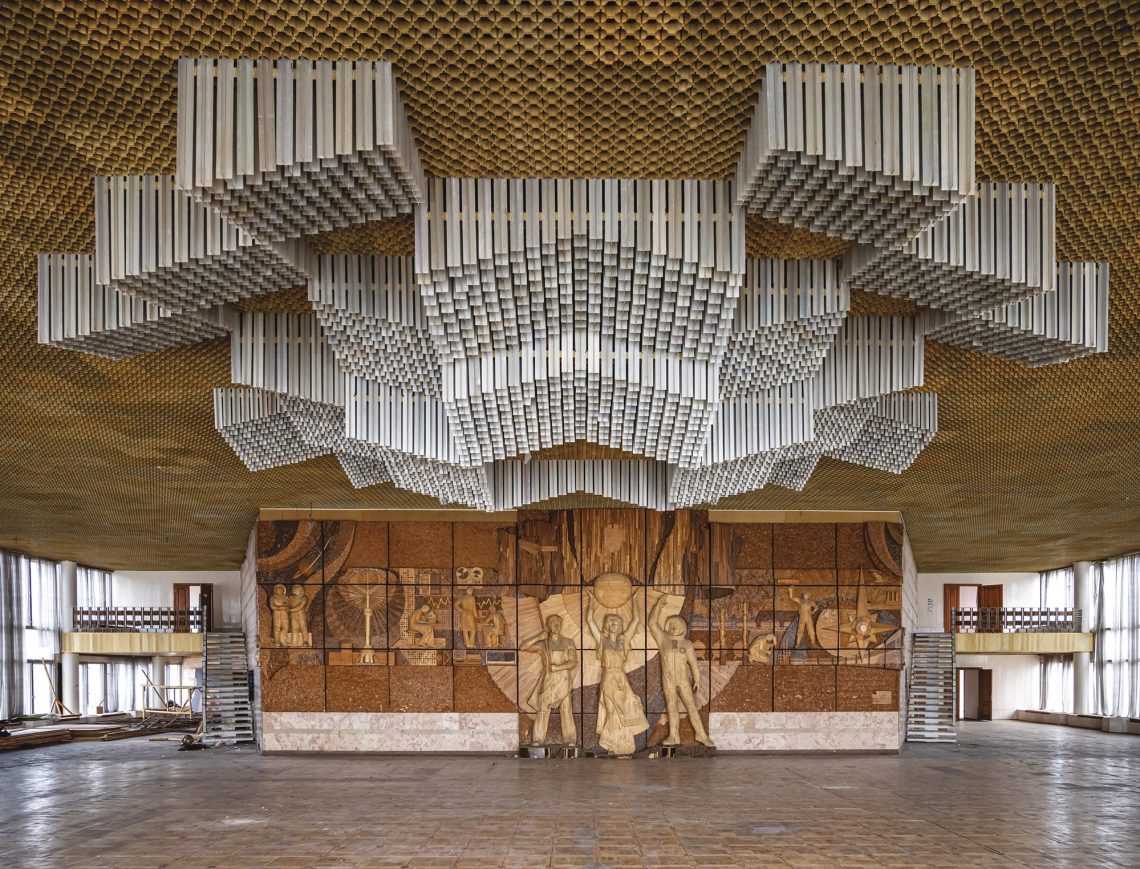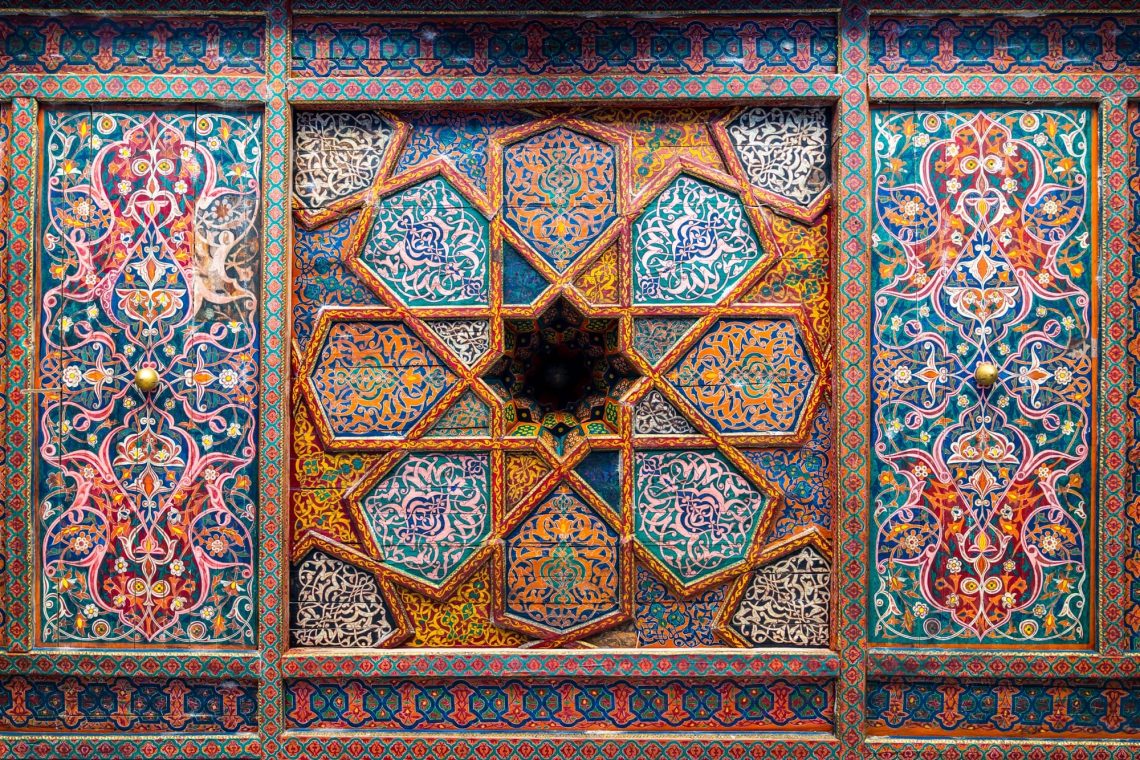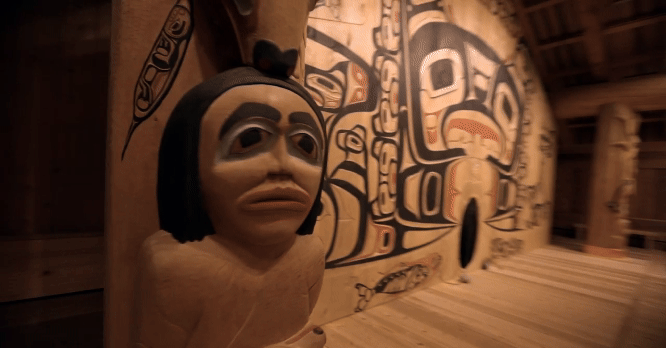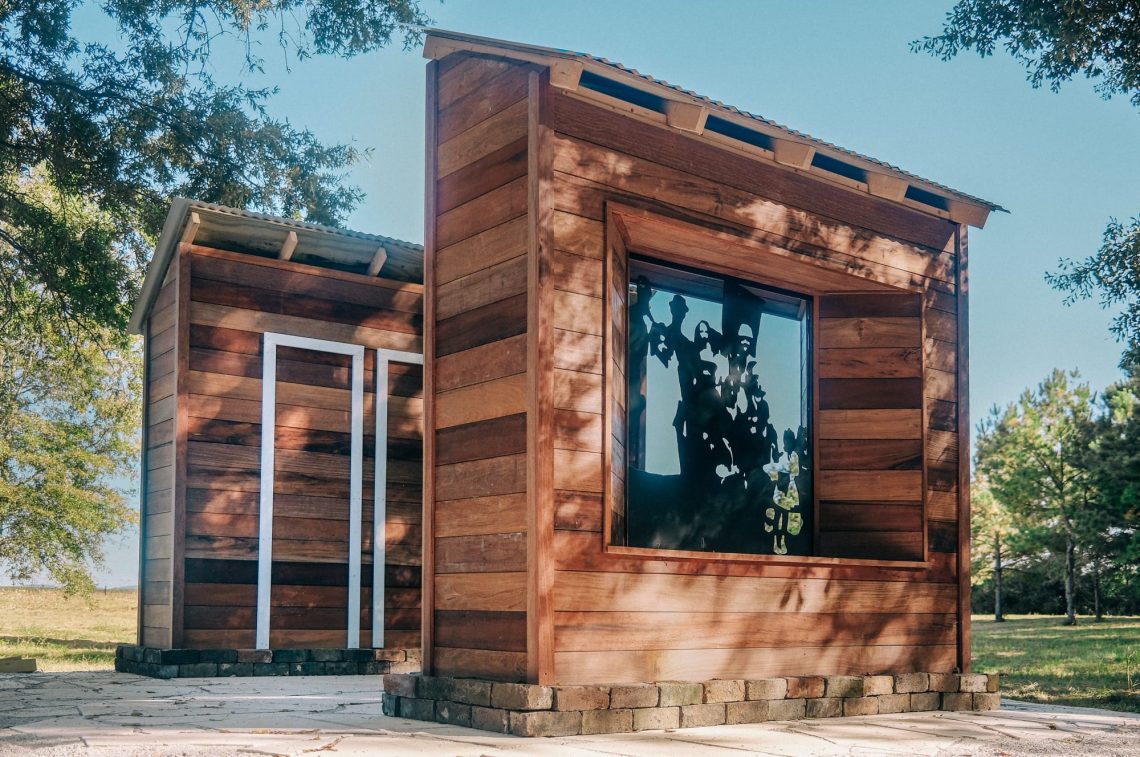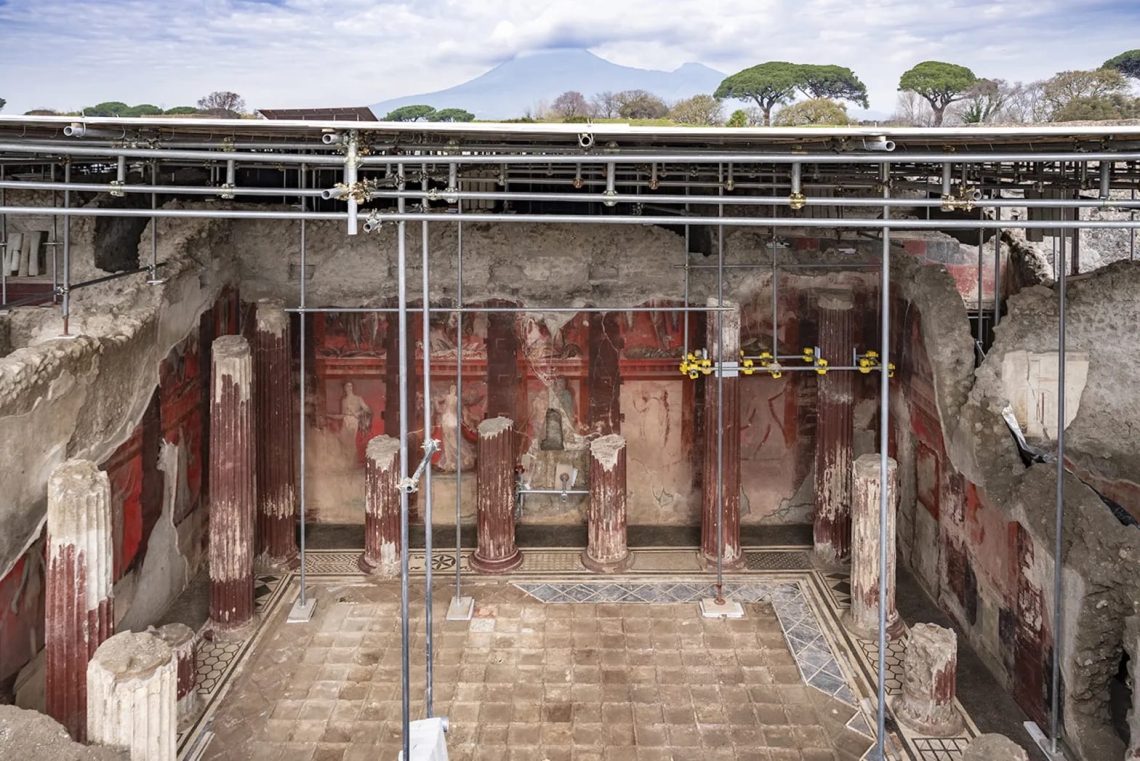History
Five Years in the Making, a MiG-21 Fighter Jet Gets a Glow-Up from Tens of Millions of Glass Beads
“We’re going to make stuff out of beads that is going to take people’s breath away,” says Ralph Ziman in the trailer for “The MiG-21 Project,” a military jet that he and a transcontinental team coated nose to tail in millions upon millions of glass beads. For the past 12 years, the Los Angeles-based artist has examined the impacts of the Cold War Era and the global arms trade through a trilogy titled Weapons of Mass Production, motivated by his upbringing in Apartheid-era South Africa. More than half a decade in the making, “The MiG-21 Project” completes the series. The first installment, “The AK-47 Project,” reimagined the aesthetic of one…
‘Ukrainian Modernism’ Chronicles the Nation’s Midcentury Architectural Marvels
During the Soviet era, modernist architecture rose to popularity as a means to express power, prestige, and views toward the future following World War II. Across Eastern Europe, asymmetric details, geometric rooflines, circular footprints, monumental murals, and blocky brutalist structures rose in defiance of pre-war classical and vernacular styles. In Ukrainian Modernism, Kyiv-based photographer and researcher Dmytro Soloviov’s first book, the nation’s under-recognized mid-20th-century built heritage takes center stage. “Ukraine’s modernist buildings are an extraordinary blend of function, avant-garde aesthetics and ingenious design, but despite these qualities, they remain largely unrecognised,” says a statement from FUEL, which will release the book later this month. Soloviov chronicles a buildings that are…
‘Titanic: The Digital Resurrection’ Unveils an Unprecedented View of the Harrowing Maritime Disaster
In the summer of 2022, a team of deep-sea researchers spent six weeks in the North Atlantic Ocean at a remote site about 370 nautical miles off the coast of Newfoundland. The final resting place of RMS Titanic, which sank on April 14, 1912, the ocean floor bears the magnificent remains of the 883-foot-long vessel. When the ship disembarked from Southampton, England, it carried more than 2,200 passengers and crew, but only about 700 were rescued after it struck an iceberg. Using remotely operated underwater vehicles, scientists explored the wreck from a range of vantage points, expanding their survey across a debris field that stretches as wide as three miles.…
Christopher Wilton-Steer’s 25,000-Mile Journey Captures a Contemporary View of an Ancient Trade Route
From aerial views of modern-day Venice to a 15th-century caravanserai in Kyrgyzstan, Christopher Wilton-Steer’s awe-inspiring photographs capture contemporary views of life along a series of 1,500-year-old trade routes. An extraordinary historical, cultural, and archaeological phenomenon, the Silk Road connected China in the East to Rome and the Mediterranean in the West. Around 4,000 miles long in its entirety and comprising numerous linking routes—some of which still exist as highways today—the network was used to transport valuable silks from China westward while sending wool and precious metals east. Travelers also transmitted global news, religious beliefs, and disease—most famously The Black Death in the 14th century—along the storied route. An aerial view…
More than 180 Photographs Chronicle Brutalist Suburbs and Public Buildings in ‘Eastern Blocks II’
In the second half of the 20th century, “brutalism and the shall-we-call-it ‘marketplace modernism’…when it appeared in the East, was always about spectacle,” Zupagrafika founders David Navarro and Martyna Sobecka say in a blog post about Eastern Bloc suburbia. Brutalist housing estates and public buildings of the post-war Soviet era were built on a massive scale, often from concrete and prefabricated panels, to accommodate growing populations and to demonstrate power, socialist values, and modernity. Sometimes blocked in color or complemented by murals, these hulking structures largely emphasized monolithic forms, an unmissable PR message about communist ideology. Tbilisi Brutalism is a study in contrasts—heaviness juxtaposed with balance; concrete set into the…
A Years-Long Collaboration Sees a Traditional Tlingit Tribal House Return to Glacier Bay
People have lived in the area around modern-day Glacier Bay National Park, along Alaska’s rugged southern coastline, for at least around 3,000 years. Nearby, in Groundhog Bay, evidence of human habitation extends back a mindboggling 9,000-or-more years. In the mid-18th century, advancing glaciers forced ancestral Huna Tlingit people to abandon their homes. While they could visit certain areas occasionally to hunt and fish, the evolving conditions and ice prevented them from living there. And when the area was designated a national monument in 1925, it seemed possible the displacement would be permanent. “I never, ever thought that I would ever see the day, in my lifetime, that Tlingits could return…
‘Little Beasts’ Is a First-of-Its-Kind Museum Collaboration Reveling in Art and the Natural World
During the 16th and 17th centuries, major developments in colonial expansion, trade, and scientific technology spurred a fervor for studying the natural world. Previously unknown or overlooked species were documented with unprecedented precision, and artists captured countless varieties of flora and fauna in paintings, prints, and encyclopedic volumes. Marking a first-of-its-kind collaboration between the National Gallery of Art and the Smithsonian National Museum of Natural History, Little Beasts: Art, Wonder, and the Natural World pairs nearly 75 prints, drawings, and paintings with around 60 objects from the NMNH collection. Jan van Kessel the Elder, “Insects and a Sprig of Rosemary” (1653), oil on panel, 4 1/2 x 5 1/2 inches…
Who Shot Me? Help Identify the Anonymous Photographer Who Captured 1960s San Francisco
Between 1966 and 1970, a San Francisco-area photographer captured thousands of images documenting civil rights demonstrations, protests against the Vietnam War, Grateful Dead concerts in Golden Gate Park, and so much more. Their archive is a veritable treasure trove of the era’s counter-culture and evidence of their willingness to put themself in the middle of the action to get the perfect shot. The problem, though, is that no one knows who the photographer is. Bill Delzell, of the nonprofit SpeakLocal, encountered the archive in 2022 after a friend introduced him to its then-owner, who was looking for a buyer. A commercial photographer and collector, Delzell found himself enamored by the…
‘The Praise House’ Shares the Story of a Contemplative Installation on an Alabama Plantation
On the site of the former Scott’s Grove Baptist Church, artist Tony M. Bingham has constructed a monumental work of contemplation and reflection. Two wood-paneled walls stand parallel in the serene clearing with stained glass windows, a Sylacauga marble floor, and a steel cutout depicting members who once worshiped on its grounds. A tribute to local history, Bingham’s work is titled “The Praise House,” which takes its name from the vernacular structures people who were enslaved often built on plantations throughout the Southern U.S. as a space for prayer. “My way of addressing the power and the legacy is to just begin to look at some of the possible sources…
Buried for Nearly 2,000 Years, a Monumental Dionysian Fresco Sees the Light of Day in Pompeii
When Mount Vesuvius erupted in 79 C.E., the enormous explosion buried the city of Pompeii in an astonishing 19 meters of ash and debris. (A recent study concludes that in the neighboring town of Herculaneum, the blast was so intense that it vitrified a young man’s brain.) Since excavations of the area began in 1748, discovery after discovery has revealed lavish, poignant, and complex details about what life was like nearly 2,000 years ago in the Roman port town. When Vesuvius buried everything, the ash provided an extraordinarily protective covering for delicate frescos and structures, like an expansive fresco recently excavated in a banquet hall that “sheds light on the…




